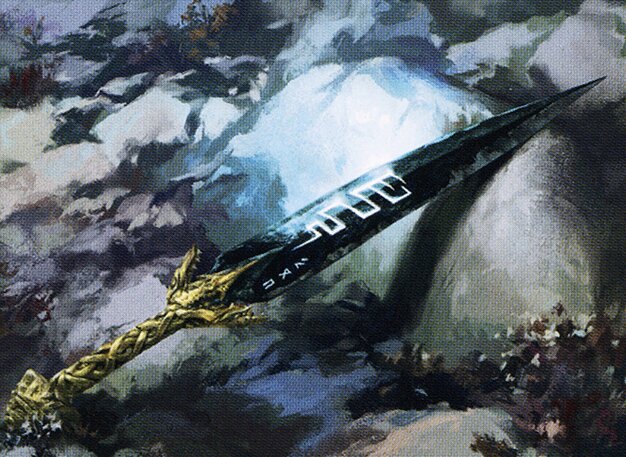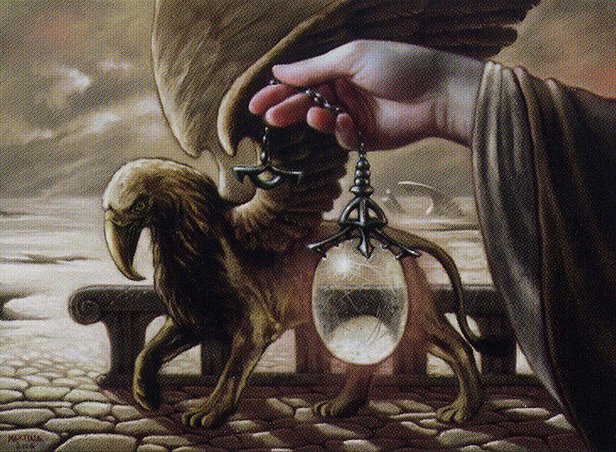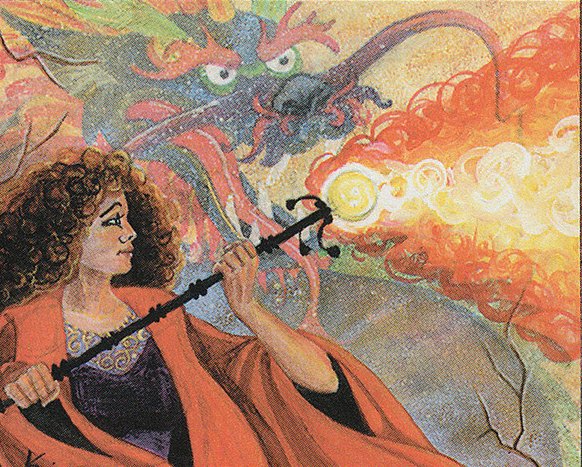Fantasy games are heavily inspired by genre tropes, but the origins of these tropes are far older than J. R. R. Tolkien and C. S. Lewis.
10. Shapeshifting
Shapeshifting is a theme found in folklore around the world. Werewolves are of course very well known; less commonly known are selkies, beings in Celtic and Norse mythology that are capable of transforming from seal to human and back with the use of a seal skin. In Japanese folklore, the kitsune or fox spirit is a yōkai (supernatural being) that can shapeshift into human form, often appearing as a beautiful woman. Shapeshifting is sometimes imposed on humans as a curse or otherworldly trickery, such as in the Scandinavian fairy tale “East of the Sun and West of the Moon,” where a prince is turned into a bear by a troll and can only revert to his human form at night.
Gods can be associated with shapeshifting as well. For example, Zeus, the head of the ancient Greek pantheon, has many trysts while assuming different physical forms. The Greek sea god Proteus is also associated with a fluid and transformative nature. In the Norse pantheon, the trickster god Loki frequently shapeshifts, and once even becomes pregnant while in the form of a mare.
The prehistorian Jean Clottes proposes a theory of fluidity as inherent in the worldview of ancient peoples. According to his theory, the categorical boundaries between human and animal or plant, or man and woman, were not rigid to paleolithic humans, but rather fluid and subject to change. It’s therefore fitting that shapeshifting player characters in games are most frequently druids, the class often associated with primal magic, as this is perhaps a primal and deeply human way of seeing the world.
9. Elementals
As you stroll through a caldera in the vast open world of an MMORPG, a monster made of pure flame crosses your path. It notices you, and you wonder to yourself if your fire resistance is maxed as you prepare for combat with the fire elemental.
Elementals as supernatural beings originated in the writings of the alchemist Paracelsus. The concept of elements in Western esotericism dates back much further to the pre-Socratic philosopher Empedocles, who described the world as being composed of four fundamental “roots”: earth, water, air, and fire. This idea was further expanded on by the Socratics and given the term element, and later the fifth element aether was added to this system. While this particular concept is Hellenic, similar systems exist in the ancient philosophies of other cultures. In Hinduism, the Vedas attest to the five panchamahabhuta of earth, water, air, fire, and void. In China, the wuxing include fire, water, wood, metal, and earth.
Centuries after Empedocles, during the German Renaissance, Paracelsus built off of these ideas to describe four types of supernatural beings, each associated with an element: gnomes (earth), undines (water), sylphs (air), and salamanders (fire). Salamanders, a very real amphibian, have a long history of being associated with fire in Mediterranean cultures, likely due to the fact that they could be spotted fleeing from under burning wood. Gnomes (now found throughout fantasy fiction and games), sylphs, and undines, on the other hand, were Paracelsus’s own creation. In contrast to the elementals of today’s games that are often comprised entirely of one element and deal elemental damage to player characters, Paracelsus’s elementals were notable for being able to traverse the medium of their associated element; in other words, the elements were their natural habitat.

Rune of Mortality by Yeong-Hao Han
8. Runes
Whether simply collected, assembled into words, or inscribed on a weapon, runes are undeniably a source of power in many games.
Runes are letters of the Germanic runic alphabets, the most well-known among these being the Norse Elder Futhark. In Norse mythology, the god Odin hung from the world-tree Yggdrasil for nine nights and sacrificed his eye to drink from a well at the roots of this tree and gain the knowledge of the runes. Odin was associated with both magic and poetry, and in legends he describes healing and necromancy as powers that can be derived from rune use. These runes were more than simply a language tool—they were also used for magic.
From the Eddas to the sagas, runes have been described in ancient Norse literature as having magical applications. When carved into wood, stone, or metal, runes can be used to charm, as protection against poison or injury, to ward off evil, to ensure the safe passage of ships, and—when carved into a weapon—to guarantee victory in battle. Beyond written sources, archeological evidence supports that runes were indeed used for magic by the ancient Scandinavian peoples, due to non-linguistic inscriptions of runes found in objects.
7. Portals
Portals are a common motif in fantasy games. They can function as a quality-of-life mechanic to allow players to fast travel back to the nearest town, or between cities in a video game. They can also be a plot device that rips open a parallel dimension to further the story. Special mention here to the linking books in the Myst series that act as both a barrier to and a portal between the various game levels. Though portals may be evocative of science fiction concepts like wormholes and multiverses, their origins are much more grounded in the realm of fantasy.
To the ancient peoples of the world, magical realms were real places that humans and spirits could travel between within the same world. Fairies and elves dwelt under hills, the land of the dead could be found underground, and the Olympians resided on . . . well, Olympus. Stories of supernatural beings existing in our natural world are found across many cultures. The prehistorian Jean Clottes calls this idea permeability—the idea of no separation between our world and the spirit world.
From the fragmentation and loss of traditional knowledge due to the spread of Christianity, to the age of sail, to the age of Enlightenment, an ever-accelerating process of disenchantment took place. In the Victorian era, the newly formed religion Spiritualism explained away the disconnect of spirits from our world—the spirit world existed, but it was separate, parallel to ours, and could only be communicated with via mediums. In the late Victorian era, the first instances of portal fiction began to appear. Characters could cross from our mundane reality to an enchanted, fantastical parallel world through magic doorways, allowing for readers’ suspension of disbelief. Portal fiction continued to proliferate into its own subgenre of fantasy fiction over the next century. Game designers creating fantasy tabletop roleplaying games and video games drew inspiration from the rich world of fantasy fiction, and portals took on the role of serving as both a story mechanic and a game mechanic.
6. Bards
Famous for their charisma, bards are an iconic archetype of fantasy fiction and games. More than just a source of inspiration rolls, bards also entertain, enliven, and enchant.
While bards themselves are a real-life class of performers in ancient Celtic society, music’s power to enchant is well-attested in folklore. The Irish god known as the Dagda has a magical harp called “the Four Angled Music” that can change the seasons when played. In Greek myth, the tragic hero Orpheus is capable of such supernaturally beautiful song that he moves Hades, god of the underworld, to release his wife Eurydice. In western Europe, the poem Orfeo and its related ballad replaces Hades with the King of Fairies, who again is so enchanted by the beauty of the hero’s song that Orfeo’s wife is released from the fairies’ hold. In Scandinavia, the ballad Harpans Kraft tells the story of a man who rescues his bride from a water spirit, a nix or nøkken—itself a creature associated with music, in this case the fiddle—again through a supernaturally beautiful harp performance. Nix are depicted in Scandinavian folklore as frequently luring unsuspecting passers-by to their deaths by playing such beautiful fiddle music that their victims throw caution to the wind and approach streams and rivers where they are then drowned. Nix are also depicted as being able to teach humans otherworldly and powerful fiddle playing, for a price.
5. Magical Weapons
What’s the fun in playing a hero that goes on quests and saves the world if you can’t have a magic sword?
Magical weapons are popular in folk tales of heroes and in myths about gods. In Irish mythology, the Dagda’s club has the power for both killing and bringing the slain back to life. In the Arthurian cycle, a number of medieval texts with overlapping and sometimes conflicting legends about the mythical king Arthur, there is both the sword in the stone and the sword in the lake (both sometimes called Excalibur, while other times only the latter is named). The magic of the sword in the stone is that it can only be pulled by the rightful successor to the throne, and the magic of Excalibur (in some tales) is that its scabbard protects the sword’s wielder from all harm. A similar tale to the sword in the stone exists in The Saga of the Volsungs. Sigmund, father of Sigurd the dragon-slayer, pulls a supernaturally strong sword from a tree after it is placed there by Odin. Sigmund’s sword is later magically broken by Odin and reforged by his son Sigurd, once again becoming supernaturally sharp and strong.
The supernaturally-enhanced damage and special abilities of magical swords, available to player characters in both tabletop roleplaying games and fantasy video games follows in this tradition.

Veilstone Amulet by Martina Pilcerova
4. Amulets
Many a player knows the grind toward completing a perfect set of armor—gloves, boots, helmet, chestpiece, pauldrons, belt, rings, and of course, an amulet.
Amulets are a form of apotropaic magic—magic that is intended to ward off evil. An amulet is worn or carried in order to protect its owner from harm. One common type of amulet is a nazar, an eye-shaped amulet used to ward off the evil eye, a curse powered by envy. Eye amulets have existed since at least 3,000 BCE in Mesopotamia, and nazar amulets are still popular today in Mediterranean, West Asian, and South Asian cultures. Hand-shaped hamsa amulets, popular in Arab, Jewish, and Berber cultures in North Africa and West Asia, are also used to protect against the evil eye and are also still widely used today. Cross necklaces worn by some Christians are a type of amulet as well. Miniature hammers found in Viking age graves in Scandinavia suggest that a representation of Mjölnir (Thor’s hammer) was used as an amulet by medieval Scandinavians.
In games, amulets often function as a defense against certain types of magical damage, such as providing resistance to a certain element or poison. In this way, their function is still very similar to that of real world amulets.
3. Necromancy
A summoner of the dead and the true goth class, necromancers are some of the most powerful character classes in games.
Necromancy is found in folklore from around the world. Necromancers themselves are often evil in folk tales and myths, while beneficial necromancy usually falls under the purview of a shaman. In the Renaissance, the German polymath Agrippa describes two types of necromancy in his Three Books of Occult Philosophy: the raising of corpses and the summoning of shades (specified as sycomancy). According to Agrippa, the souls of the dead can be summoned through the use of organic materials that reminded spirits of their corporeal forms, though incantation, or with a sacrifice. These summoning spells were best performed at either the location of the corpse itself, a site the soul had an affinity for in life, or the site of a massacre or execution. In The Book of All Forbidden Arts, Johannes Hartlieb describes necromancy as an evil art that calls upon the spirits of the dead to answer the questions of the summoner.
Both the raising of corpses and the summoning of spirits can be seen in games today, though these are usually for the purpose of dealing damage to enemies in video games, while the divination aspect of necromancy is more often relegated to tabletop roleplaying games.

Pyroblast by Kaja Foglio
2. Elemental Magic
Whether you’re a healer restoring the health of party members using water magic, or you’re an elementalist deciding whether to specialize in fire, ice, or lightning damage, you’re harnessing the power of the elements themselves to perform magic.
Elemental magic looked quite different in history than it does in games today. During the Renaissance, Johannes Hartlieb described the “seven forbidden arts” in his text The Book of All Forbidden Arts. Though written as a guide to detecting occult practices for the purpose of persecuting witches, The Book of All Forbidden Arts offers a view into Renaissance beliefs about magic.
The seven forbidden arts are necromancy, geomancy, hydromancy, aeromancy, pryomancy, chiromancy, and spatulamancy. Each of these forbidden arts are described as forms of divination, magic used to obtain information. Geomancy, hydromancy, aeromancy, and pyromancy in particular are elemental magics, using the media earth, water, air, and fire to gain knowledge. The movements or behavior of the element, such as bubbles formed in water, can be read as symbols that can be decoded to yield specific information. Additionally, the behavior of objects suspended within a particular medium, such as birds flying in the air, can be read similarly (the reading of bird entrails is also a form of aeromancy, due to the association of birds with air).
Rather than fortune telling, elemental magic in games today often involves wielding the raw, concentrated power of an element to inflict damage on enemies and heal or buff party members. Sometimes the number and types of elements differs from those described in real-world esoteric texts. For example, the trinity of elements fire, lightning, and ice work well in games with damage-dealing magic classes, since each element has its own damage mechanic: fire burns, lightning shocks, and ice freezes.
1. Mana
While many fantasy games draw heavily from Western esotericism and European myth and folklore, one of the most ubiquitous concepts in fantasy games today actually comes from Polynesia.
In Polynesian cultures and some Melanesian cultures, mana is a word for a fertile, spiritual, energetic power that comes from the gods and can exist in living beings as well as inanimate objects. Mana is associated with good fortune and plentiful abundance, knowledge and skill, and the ruling power of nobility. After the exploration and colonization of the Pacific by Europeans, the concept of mana was brought to European academics who in the early twentieth century tried to fit mana into a model of universal “linear” human cultural development. Belief in mana was equated to a “pre-animist” religion, and parallels were drawn to beliefs among other indigenous cultures of the world. This model was problematic in its approach and methodology, but it gave the idea of mana a wider audience.
The speculative fiction writer Larry Niven, who had read the works of anthropologists, used the concept of mana in his story (and later, series) The Magic Goes Away. In this story, magic is powered by mana, a finite resource. In the 1980s, fantasy computer games had been using magic points, or “MP,” in addition to a player’s health points or “HP.” MP was given the folk etymology of “mana points” by the video game Dungeon Master, which then became a standard mechanic in gaming. Beyond video games, Magic: The Gathering implemented mana as a core mechanic of the game and even paid homage to Larry Niven by creating the card “Nevinyrral’s Disk.”
Renée Heitman is an editor of nonfiction books with a focus on history, folklore, and the occult. Her favorite games are Diablo 2, Path of Exile, and the Myst series.

